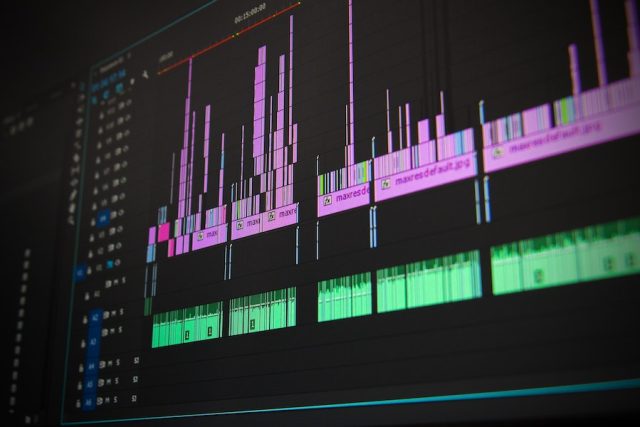80% of the world’s internet traffic consists of video content. The number of videos being uploaded on YouTube every minute is also increasing at an unprecedented rate and this trend shows no signs of slowing down anytime soon. The sheer volume of content that needs to be translated into multiple languages can be staggering, which makes it essential for companies and translators alike to use AI-powered software to overcome language barriers and streamline their translation process.
The Significance Of Ai-Powered Technology In Streamlining The Translation Process And Overcoming Language Barriers
The significance of AI-powered technology in streamlining the translation process and overcoming language barriers
The ability of german to english video translation is just one way that AI software can be used to overcome language barriers. If you’re an entrepreneur who wants to expand your business outside of your native country or city, there’s a good chance that you’ll need to communicate with people who don’t speak your native tongue. Similarly, if you’re creating educational material such as tutorials or how-to guides on YouTube (and other video platforms), then having access to translation tools will help ensure that everyone can access your videos regardless of how much English they know.
Additionally, there are many situations where businesses could benefit from being able to communicate with their customers in multiple languages: whether it’s sending out newsletters or marketing campaigns across different countries/markets; conducting interviews with potential employees who do not speak English as their first language; providing customer support over email/phone calls/chat messages etc., knowing how much information needs translating into another language beforehand helps save time later down the road when going back through old emails/messages etc., trying figure out what was said!
The Importance Of Translating Video Content From German To English, Considering The Prominence Of Both Languages Globally
The importance of translating video content from German to English, considering the prominence of both languages globally:
- German is the most widely spoken language in Europe, with over 100 million native speakers.
- English is the most widely spoken language in the world, with 360 million native speakers worldwide.
- It’s also an official language at institutions like the United Nations and European Union (EU).
- On top of all that, it’s one of three official languages for business use within Europe alongside French and Italian and has become increasingly popular as a second tongue for people around the globe thanks to its widespread use on social media platforms like YouTube or Facebook Live videos.
Detail The Essential Features Of Ai-Driven Software That Enable Seamless German To English Video Translation
AI-powered software is the future of translation, and it’s already here. The technology can be used for many other languages than German to English, including French to English, Spanish to English and more. This AI-driven software will revolutionize your business by making it easier than ever before for you to access professional translations for your videos and other documents.
The accuracy of these types of systems is unmatched by human translators because they are able to process large amounts of data at once so they don’t miss anything! You’ll never have an issue with incorrect translations again when using this type of system; if anything comes up that needs correcting later on down the road (for example: if someone says something wrong), then all you need do is go back through them again with another pass through their original script files before uploading them onto YouTube again with no errors whatsoever.
The Benefits Of Ai-Powered Video Translation Software For Content Creators, Businesses, And Viewers
The benefits of AI-powered video translation software for content creators, businesses and viewers:
- It’s an affordable way to provide multilingual content. Many companies have invested in expensive human translators to translate their videos into multiple languages. With AI-powered software, you can now create multilingual videos at a fraction of the cost and time it would take with human translation services.
- You can reach a broader audience with your message by providing multilingual content online or offline – no matter where they are located or what language they speak!
The Importance Of Providing Multilingual Video Content To Reach A Broader And More Inclusive Viewership
You might be thinking that providing multilingual video content is a good idea, but what’s the point? You already have a website and other marketing materials in English. Why should you translate them into German or any other language?
Well, here are some reasons:
- Multilingual videos will help reach a broader audience. If your business sells products or services across borders, including multilingual videos on your website can help build trust with potential customers who speak different languages. This is especially true if those potential customers are located outside of the United States the market for e-commerce sites like Amazon and Alibaba continues to grow globally every year!
- Providing multilingual videos makes sense from a cost perspective too; it’s cheaper than hiring someone else who has experience translating text-based content (like blogs), because there aren’t as many nuances involved when working with audio/video files compared with written documents containing thousands upon thousands words worth information about topics such as sales figures or technical specifications related products sold online stores worldwide.
Conclusion
Video content is a powerful tool for businesses and individuals to share their message with the world, but it’s also an important way to connect people from different countries and cultures. With AI-powered software, you can easily translate your videos from German into English or any other language of your choice so that they’re accessible to more viewers. This technology has many benefits for both creators and viewers alike including cost savings on human translation services as well as faster turnaround times than traditional methods such as subtitles or dubbing.














